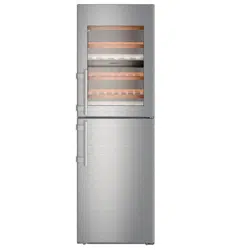Loading ...
Loading ...
Loading ...

u
Only use a damp cloth to clean the telescopic rails. The
grease in the runners is for lubrication purposes and must
not be removed.
After cleaning:
u
Wipe dry the appliance and items of equipment.
u
Connect the appliance and switch it on again.
u
Switch on SuperFrost (see 5.4.5) .
When the temperature is sufficiently cold:
u
Put the food back inside.
6.5 Cleaning the IceMaker
The IceMaker drawer must be emptied and pushed in. The
IceMaker must be switched on.
u
Press Menu.
u
Press the navigation arrows until the IceMaker is
displayed.
u
Press the IceMaker symbol.
u
Press the navigation arrow until the cleaning posi-
tion is displayed.
u
Press ON.
w
The ice cube tray moves to the cleaning position.
The screen cannot be used during this process.
w
OFF appears: The rotary movement stops and the
IceMaker switches off for cleaning.
u
Remove the drawer.
u
Clean the ice cube tray and drawer with a soft cleaning cloth
and warm water. If necessary use a mild detergent. Then
rinse out.
u
Push the drawer in.
u
Press OFF.
w
The ice cube tray moves to the operating position.
NOTICE
Rinse agent residue in the ice compartment and drawer.
Nausea or irritation of the mucous membrane.
u
Remove rinse agent residue: Discard the first three batches
of ice cubes.
u
Leave the IceMaker switched on.
-or-
u
Switch the IceMaker off (see 5)
6.6 Customer service
First of all check whether you can eliminate the fault yourself.
(see 7) If you can't, contact Customer Services. You can find
the address in the enclosed customer service list.
WARNING
Risk of injury if repair work is not carried out professionally!
u
Have any repairs and action - not expressly specified - on
the appliance and mains cable carried out by service
personnel only. (see 6)
Displaying the appliance description (model and index),
service no. (service) and serial no. (S. no.) on the screen:
u
Press menu.
u
Press the navigation arrows until the appliance infor-
mation symbol is displayed.
u
Press the appliance information symbol.
w
The appliance information is displayed.
u
Note down the appliance
information.
u
To return to the home screen
press the Back symbol.
u
Close the door.
u
Contact customer service and give them the required appli-
ance information.
w
This will help us to provide you with a faster, more accurate
service.
u
Follow any further instructions given by Customer Services.
Alternatively you can read off the appliance information
from the model plate:
u
Read off the appliance
name
Fig. 54 (1)
,
service no.
Fig. 54 (2)
and serial no.
Fig. 54 (3)
from the
model plate. The
model plate can be
found on the inside of
the appliance on the
left.
Fig. 54
Licence agreements:
Licences used can be viewed at ©.
u
Press ©.
7 Malfunctions
Your appliance is designed and manufactured for a long life
span and reliable operation. If a malfunction nonetheless
occurs during operation, check whether it is due to a handling
error. In this case you will have to be charged for the costs
incurred, even during the warranty period. You may be able to
rectify the following faults yourself:
Appliance does not work.
→
The appliance is not switched on.
u
Switch on the appliance.
→
The power plug is not properly inserted in the wall socket.
u
Check power plug.
→
The fuse of the wall socket is not in order.
u
Check fuse.
→
The appliance plug does not fit the appliance properly.
u
Check the appliance plug.
The compressor runs for a long time.
→
The compressor switches to a low speed when little cold is
needed. Although the running time is increased as a result,
energy is saved.
u
This is normal in energy-saving models.
→
SuperFrost is activated.
u
The compressor runs for longer in order to rapidly cool the
food. This is normal.
Excessive noise.
→
Due to the various speed steps, speed-regulated* compres-
sors can generate different running noises.
u
The sound is normal.
A bubbling and gurgling noise.
→
This noise comes from the refrigerant flowing in the refriger-
ation circuit.
u
The sound is normal.
Malfunctions
* Depending on model and options 25
Loading ...
Loading ...
Loading ...
